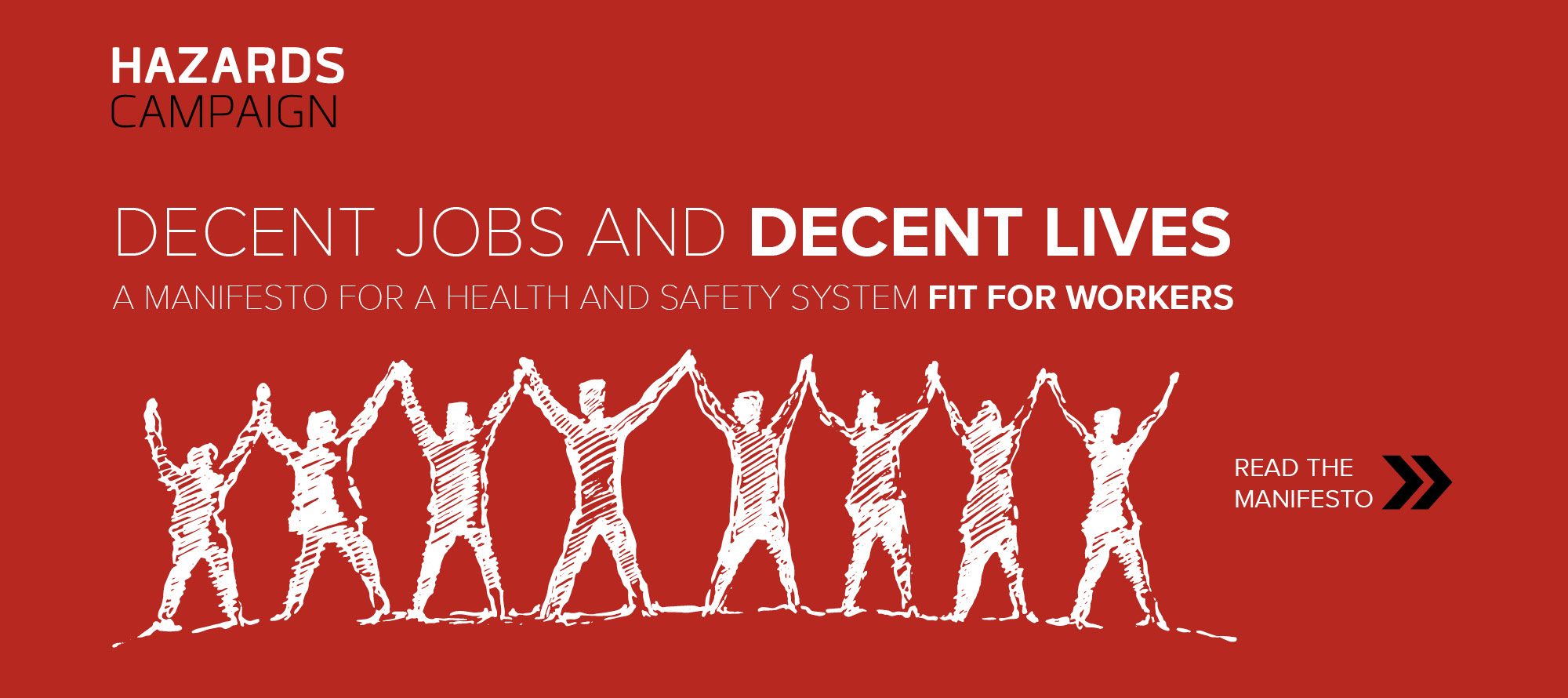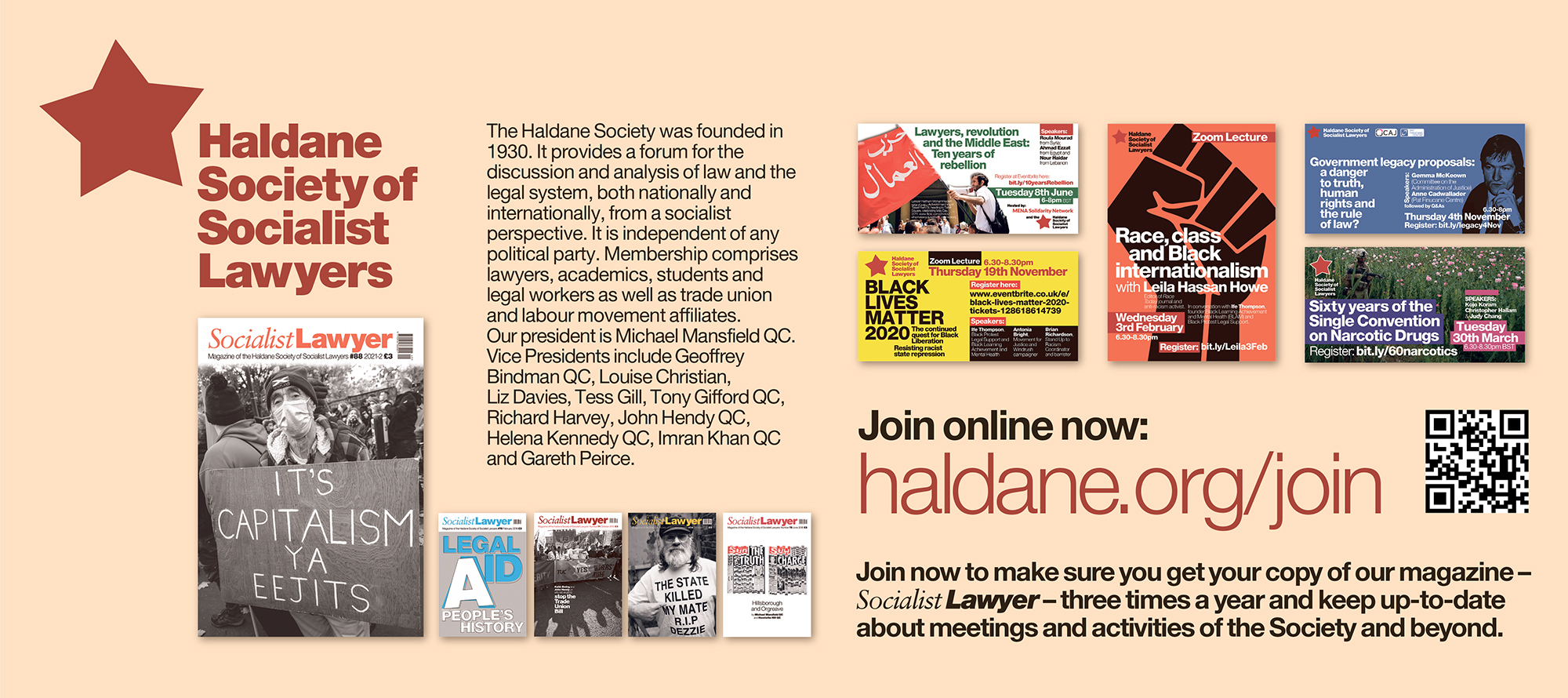The Future of Equality Law at Work: London
Will post-Brexit trade dealings lead to a race to the bottom for UK employment and equality rights?

About the Conference
By Andrew Moretta, University of Liverpool
Chair Adrian Weir, Chief of Staff at UNITE, introduced the conference, referring to the ‘tooth and nail’ fight being conducted by Asda (Asda v Brierley) to deny thousands of its employees equal pay, the inadequacies of the new gender pay reporting regime, as well as to the UNISON triumph over the tribunal fees regime. As to the threat to current standards of legal protection posed by ‘Brexit’, Adrian placed emphasis on the prospect of trade deals with non EU states, and their potential to put pressure on the UK to engage in a ‘race to the bottom’ on labour and equality rights – pressure likely to be compounded by demands from transnational corporations for ‘harmonisation’ with the likes of the USA, and by potential challenges in supranational trade courts.
Matthew Creagh, TUC employment rights office – TUC equality work 2017
Matthew delivered an overview of the findings of the recent report published by his policy team, Better jobs for mums and dads, and the necessity to add substance to the ‘sound bite legislation’ that provides rights to extended maternity leave, to shared parental leave, and the right to request ‘flexible’ working hours.
The report argues for minor amendments of the current regulations on parental leave be made to enhance flexibility – that parental leave should be allowed to be taken on a piecemeal basis, rather than for one continuous period, and that the notice period required of workers intending to take such leave should be reduced. Most importantly, however, it is proposed that all parental leave should be paid, with the minimum pitched at the level of the National Living Wage. Where requests for flexible working are rejected, the TUC is pressing for employers to be obliged to show that they have been turned down for good reason – backed by sufficiently dissuasive penalties – and for the worker to be given the option to request a temporary, rather than permanent change, to working hours.
Matthew argued that the recommendation of the otherwise largely anodyne Taylor Review that all workers be given a ‘day one’ right to a statement of contractual obligations would be of assistance in permitting workers to challenge employers who like to keep contractual obligations vague, and would be a step closer to initiating the required cultural shift which will see employers accepting the necessity to accommodate the domestic responsibilities of their lower paid workers.
Karon Monaghan QC of Matrix Chambers – Predicting changes in equality law
Karon discussed aspects of equality law where she thought change was likely. First, ‘stereotyping’: So far, the courts have taken the view that workplace dress codes requiring women to wear high heels and the like, merely reflect social norm and are not discriminatory, arguing that when men undertake roles where such codes are imposed they are required to wear the masculine equivalent. However, Karon believes that following the recent OFSTED case (Chief Inspector of Education, Children’s Services and Skills v Al-Hijrah School [2017] EWCA Civ 1426), where the Court of Appeal held that the segregation of female pupils at a faith school was discriminatory, that these codes will be reconsidered by the courts. In the OFSTED case, while the segregation did not disadvantage the pupils, the girls were treated differently because they were regarded as inferiors, and likely to distract the boys. That was sufficient for the treatment to be both different, and discriminatory. Similarly, the disputed dress codes do not disadvantage women, but they do present them in a sexual way – arguably different and discriminatory treatment.
Karon also considers that instances when employers have set up ‘stand alone’ companies to avoid potential equal pay claims brought by women working in stereotypically female manual and semi-skilled occupations will be addressed by the courts. Such arrangements are intended to ensure that no ‘Single Source’ is responsible for setting remuneration. She gave the example of a contractor supplying cleaning, gardening and social caring services to a local authority, and setting up individual firms specialising in each activity so that workers in the male dominated gardening sector cannot be used as comparators in a claim brought by women engaged in cleaning and caring work. Thus, although they may be engaged in work of equal value at one local authority, with the profits of their work fed back to the same shareholders, their employers are able to pay the women less than the men (see also the case of Asda v Brierley mentioned by Adrain Weir and David Sorensen). Karon argues that s71 of the Equality Act should permit equal pay claims brought against such firms to succeed. That little-known section provides that where an equality clause fails to ‘bite’, the claimant can rely on section 1 of the Act, which allows for a hypothetical comparator. She believes that in the future, s71 will provide the means by which these equality avoiders will be tackled.
Karon then moved on to ‘Brexit’, arguing that existing employment protection, and anti-discrimination protections, must be safeguarded by a non regression clause in the Withdrawal Bill. She considers, however, that the departure of the UK from the EU presents opportunities as well as risks: The Court of Justice of the European Union (CJEU) will not permit positive discrimination on the grounds that it violates the EU principle of non discrimination, and procurement conditions. Similarly equality procurement clauses and the like, are little used for fear that the application of such provisions will favour domestic firms and breach competition law, and it seems likely that post-Brexit government and local authorities will not be constrained by such considerations.
The final area she considered was the enforcement of equality rights. Karon anticipates more use being made of the equality audit powers of tribunals following successful equality claims, and sees no likelihood of any fees system being imposed in the wake of the UNISON decision, as fees are in themselves discriminatory – there will be a disparity of impact as long as women, on average, earn less than men.
Rakesh Patel, Solicitor at Thompsons solicitors – Current race, religion and belief caselaw
Rakesh considered race, religion and belief law. Two 2017 EU cases he referred to are a valuable illustration of the limitations of the influence at the CJEU of Article 9 (1) (freedom of conscience and belief) of the Council of Europe’s European Convention on Human Rights, the EU Equal Treatment Directive, and the equality provisions of the EU Charter of Fundamental Rights in instances where employers have prevented workers displaying symbols of belief. One was a Belgian case, Achbita v G4S Secure Solutions, concerning a Muslim woman employed as a receptionist. Wishing to wear a head scarf, she had challenged her employer’s ‘neutral’ ban on wearing any religious political or philosophical symbols at work. The court found that she had not been directly discriminated against – no one was allowed to display symbols of belief. However, she had also argued that as a Muslim woman the policy put her at a particular disadvantage, and it was therefore indirect discrimination. The court, however, citing both Article 9(2), which limits the freedom of Article 9(1) ECHR to accommodate ‘the rights and freedoms of others’, and Article 16 of the EU Charter of Fundamental Rights, which reflects the fundamental EU freedom for firms to conduct business as they think fit, held that the policy was justified. G4S’s intention to project an image of neutrality where beliefs were concerned was a legitimate aim, and the ban was a proportionate means to achieving that end. In the other case, Bougnaouj v Micropole, a French case concerning broadly similar facts, the court restricted itself to finding that the ban on the hijab could not be said to be ‘a genuine occupational requirement’ to rebut a claim of direct discrimination. Rakesh observed that the approach of the CJEU was less nuanced than that taken in similar recent European Court of Human Rights (ECtHR) and UK domestic cases, possibly reflecting the strict secular traditions of France and Belgium, and had failed to apply the principle of proportionality in the sense that the impact on the businesses in these two cases was minimal, while the impact on the workers was considerable.
David Sorensen, Morrish Solicitors – Equality caselaw, an overview
David presented an overview of recent equality cases. He started with a disability discrimination case: The Government Legal Service v Brookes, which had concerned an applicant to the GLS with Asperger’s Syndrome. The tribunal had held the failure of the GLS to adapt the multiple choice test used to select candidates for employment as trainee solicitors to suit Ms. Brookes’s disability was a failure to make a reasonable adjustment to a practice, criterion or policy amounting to indirect discrimination. As well as ordered to pay an award and apologise, the GLS was issued a s 124(2) recommendation to review its examination regime. An appeal to EAT was dismissed. Suitably impressed – Ms. Brookes represented herself at both hearings – GLS subsequently took her on as a trainee solicitor.
David then considered two cases relating to the often complex question of shared parental leave. Both concerned men denied full pay when female colleagues, in what they argued was the same position, did receive full pay. In the first case, Mr. Ali v Capita Customer Management, a claim of sex discrimination was successful. In the second, Hextall v Chief constable of Leicestershire Police, the same claim failed – the less favourable treatment was not because of his sex but because he was not the birth mother; the correct comparator would be a female civil partner or spouse of a woman who had given birth, who would also not have received full pay. Both cases are pending appeal to the EAT, and David suggested that if Ali is upheld, the consequence may well be that employers will withdraw the enhanced maternity pay offered to nursing mothers rather than be obliged to pay the same to men sharing parental leave.
In Interserve FM v Tuleikyte, the claimant had received her P45 when her absence on unpaid maternity leave had, after three months, triggered an automatic response from the payroll computer. Told that her continuity of employment would be restored on her return to work, she ultimately lost all her state benefits and her home because, although she left the firm in May 2014, her official termination date was June 2013. A claim of indirect discrimination not being an option where pregnancy and maternity are the grounds of the alleged discrimination, she brought a claim of direct discrimination. The tribunal, however, in effect dealt with the case as if it were an instance of indirect discrimination – it held the flawed payroll procedure to be a policy which had put her at a particular disadvantage because of her pregnancy, and found in her favour. On appeal the EAT, which suggested that a claim for indirect sex discrimination would, in the circumstances, have been the better approach, stuck to analysing her case as direct discrimination, held that the appropriate question was whether she was treated less favourably because of her pregnancy. Although it appears that this was not the case, and that Ms. Tuleikyte’s claim therefore seems unlikely to be unsuccessful when the tribunal reconsider the case, David pointed out that the tribunal in Ali had held that the claimant had been treated less favourably because of his sex, when strictly speaking he had not, so the outcome is far from certain.
David then considered recent clarifications on questions raised in multiple equal pay claims: In Asda v Brierly and others, a claim that the work of women in an Asda supermarket was comparable with that undertaken by men in an Asda distribution depot, was disputed by the employer on the grounds that pay in the two workplaces was determined by separate management teams, and not by a ‘Single Source’. This feeble argument was accepted by the tribunal but rejected by the EAT – all working at Asda are subject to the supervision of one board of directors, who in turn are answerable to the shareholders.
An aspect of the Asda case was considered in Farmah and others v Birmingham City Council, where the EAT held that multiple claims submitted on one ET1 form have to be based on the same set of facts. Where they vary, a separate claim should be made, although a tribunal may use its discretion to accept such claims. This was a matter of particular importance under the fees regime – multiple claims were far cheaper when presented on one ET1 form. Even with fees no longer an issue, the ruling presents employers with considerably increased opportunity to persuade ETs to strike out equal pay claims on procedural grounds. An appeal is pending.
David concluded with an appraisal of the recent Efobi case, arguing that it will radically change the procedure in discrimination cases. Rather than permitting the respondent to sit back and wait for the claimant to show – or fail to show – a prima facie case, as had so often previously been the case, the respondent will now be motivated to present evidence from the start, and he believes that tribunals will now be obliged to take a ‘much more forensic approach’.
Laith Dilaimi Barrister at Old Square Chambers – Equality law through Brexit
Laith then spoke on ‘equality law through Brexit’. Essentially he argued that all is uncertain – even the seeming certainty that we must exit the EU on 29 March 2019 prediction must be qualified by the possibility of a subsequent ‘transition period’.
Citing the Race Relations Acts, the Equal Pay Act 1970, the Sex Discrimination Act 1975, the Disability Discrimination Act 1995 and the HRA 1998, Laith argued that the UK was an equality ‘trailblazer’, although he did allow that the Major government had opted out of the EU ‘social chapter’.
After a brief run down on the component parts of the EU ‘acquis’, he reminded us of the regulations on sexual orientation, religion and belief and age discrimination – all relatively recent EU initiatives. He told us that directives had ‘extended and clarified’ UK equal pay laws, given fresh pregnancy rights, and improved race and disability provisions; that the CJEU has obliged the UK courts to regard discrimination on grounds of gender reassignment as sex discrimination, and to recognise discrimination by association. He reminded us of the holiday provisions in the Working Time Directive, the rights to parental leave imposed by the Parental Leave Directive, and the protections for atypical workers implemented after New Labour had signed up for the social chapter. Citing the recent case of Walker v Innospec, where the Supreme Court ruled that the Employment Equality Framework Directive provisions on sexual orientation meant that an employer should treat the same sex partner as it would a partner of the opposite sex for the purposes of pension rights, he reminded us of Factortame cases, and of the obligation under the European Communities Act 1972 for the courts to disapply law conflicting with directly applicable EU law.
Moving on to the Withdrawal Bill, Laith emphasised the difficult task faced by the government. It is reliant on the DUP, and on Tory MPs to toe the party line to get the Bill through the Commons, and hundreds of amendments have been tabled. Significantly, a handful of key amendments has been tabled by a group of disaffected Tories led by Dominic Grieve.
Laith explained that the basis of the Bill is the repeal of the 1972 Act and the replacement of regulations based upon the Act with new laws safeguarding the rights conferred by those regulations – ‘rights powers, liabilities, obligations restrictions remedies and procedures’ will, in theory, remain intact, although Ministers will be able to amend those rights where they are no longer suited to the law as it will function outside the EU. The question of the continuing influence of the CJEU is uncertain, although as the Bill now stands, it seems that the government would prefer to make the Supreme Court responsible for that particularly politically sensitive decision.
The Equality Act should be unaffected. The weakness of the government suggests no amendments will be made using the anticipated Henry XIII powers, which if it is held to be EU ‘retained law’ it could, although amendments have been tabled which will rein in such a use of ministerial powers. However Laith allows that elements of the Tory party will see withdrawal as an opportunity for the assault on equality provisions envisaged under the Coalition – ideas aired in the Beecroft Report, and by participants in the Red Tape Challenge.
Dr. Wanda Wyporska, Executive Director of The Equality Trust – Can we really gain equality in the workplace?
Wanda ran through a series of compelling arguments for demanding equality. She pointed out to the conference that the money represented by the Sunday Times ‘Rich List’ is wealth which largely escapes the country – no ‘trickle down’ excuses can be made about money placed in offshore trusts, avoiding the tax which less privileged citizens are obliged to pay. She gave us some astonishing statistics: the ‘richest 1,000 people own more wealth than 40% of households’, and that the combined wealth of those people ‘increased by £82.5 billion to £658 billion’ last year. The CEOs of companies in the top 100 of the FTSE index earn on average £5.3 million each year – 185 times more than a nurse, and 312 times more than the average care worker.
Meanwhile, those stalwart defenders of capitalism, the CBI and the IMF, acknowledge that inequality is a threat to economic growth, while the UN sees reduced inequality, and gender equality, as two of the 17 sustainable development goals. Dr. Wyporska showed us a statistical chart showing that the more unequal the country the lower the life expectancy, and the higher the rate of infant mortality, homicide and alcoholism. She argued that the poverty that is at the root of these problems is sustained by the aggressive ‘dominance strategies’ adopted by those affected by status insecurity, and that the ‘gig economy’ and the relative lack of decent secure work paying a living wage guarantees both poverty and insecurity.
Dr. Wyporska reminded us that education and effective political representation are drivers of equality, and that in the workplace the great antidote to inequality is trade union membership – an ‘affiliative strategy’. As well as the obvious advantages of collective negotiation, dissemination of information on individual rights, assistance in exercising those rights, and reps calling out on instances of inequality and health and safety breaches, not only do trade unions provide the knowledge that is power, they provide workers with a path to political power.
Dr. Wyporska concluded her talk by directing the conference to the Public Sector Equality Duty, and the yet to be implemented section 1 of the Equalities Act 2010 which would require public authorities to take ‘due account’ of socio-economic inequality in the application of their policies, and of the campaigns to persuade councils, and the devolved governments to adopt their own version of the Socio Economic Duty. She asked us to write to our MPs demanding that steps by taken to implement section 1.
Dr. Lydia Hayes, Cardiff University – Gender pay gap reporting and ACAS guidance
Lydia was the final speaker of the day, and she gave us an invaluable overview of Gender Pay Gap Reporting (‘GPR’), and on the guidance provided by Acas. She emphasised that while equal pay involves the comparison of individuals, and the removal of discriminatory assessments of value from their contracts, the gender pay gap is a collective comparison.
Dr. Hayes gave a few reasons why there is a gender pay gap, some 42 years after the Sex Discrimination Act 1975 and the Equal Pay Act 1970 came into force, one which widens with age, starting at an average of 10%, widening further for those over 40, and further still as workers progress through middle age. Gender stereotyping is a key problem: Women are not well represented in industries where pay is high. Those who return after taking maternity or parental leave to comparatively well-paid jobs tend to have lost seniority to their male colleagues, and can also be believed to be no longer able to devote sufficient time to their work – which may go some way to explaining why the gender pay gap is at its widest in senior management. The traditional role of women in ‘caring’ work, both paid and unpaid, means that more tend to work in part-time jobs, which tend to be less well paid, pro rata, than full-time jobs. The jobs which many older women have gone into after having raised a family are often cleaning, catering and social care jobs. While the pay gap is at its narrowest in firms operating in these low-paid sectors, the predominance of women widens the overall gender pay gap.
Dr. Hayes explained the essentials of the GPR scheme. Firms employing 250 or more workers are obliged to report their overall mean and median levels of hourly pay and bonuses. The median helps identify the typical ‘middle earner’, a matter of particular importance where both highly paid and poorly paid individuals are employed. A ‘positive gap’ in percentage terms indicates that women earn more, while a neutral percentage indicates parity between the sexes. A negative gap indicates that, on average, men earn more in that particular firm.
Employers are also required to report the proportion of females and males in each ‘quartile’ (25%), of their pay hierarchy. The Gov.UK site claims that the quartiles are “helping to show employers where women’s progress might be stalling so they can take action to support their career development”, but Dr. Hayes’s view is that they serve to show up who is advantaged and who is disadvantaged by workplace stereotyping. The initiative as a whole, she told us, is a ‘transparency measure’.
The reports are due in a year after the relevant ‘snap shot day’ – 31 March 2017 in the public sector, and 05 April 2017 in the private sector – and are to be published both on the employer’s own website and the Gov.UK site, although there is no sanction for failing to report, or to publish. The ‘gender pay gap viewing service’ on Gov.UK will only reveal that the employer has failed to make a report in the sense that the firm won’t be listed, and it seems that the ‘reputational risk’ of being publically upbraided by the Equality and Human rights Commission is considered sufficient to enforce compliance. Dr. Hayes reminded us that the Cameron government were keen on the ‘naming and shaming’ approach to promoting voluntary compliance with the scheme and with progress in closing the pay gap. Of course, high-profile firms like to be positively associated with anti-discrimination initiatives: Dr. Hayes told us that Acas found that 90% of those they surveyed who were seeking work said would regard the extent of any pay gap as an important factor when choosing a job, and that 90% of employers wanted to know what their gap was. The larger pay gaps tend to make headline news stories, and can be seen as a PR ‘hygiene issue’.
Of more importance than the public relations concerns of employers however, Acas regards trade union participation in the reporting as crucial to its effectiveness, and as an essential element of the scheme where a union is recognised for collective bargaining purposes. The GPR is ‘unfocused’, and the reasons for differences in average earnings will often not be clear. As a consequence, employers are invited by Acas to submit ‘narratives’, and ‘action plans’ with the required statistics. Larger firms more likely to have a trade union presence will be very likely to submit reports, and Union involvement in the preparation of plans and narratives can be seen as an extension of collective negotiation, while the averages and quartiles will be of particular use in lending weight to demands to strip out low-paid grades, and to require that pay rises be instituted as percentages rather than as fixed sums of money.
Perhaps more significantly, when inequalities are addressed by collective bargaining, trade union membership will be promoted, and employers may be reminded of the value of trade union recognition. Advances in the sphere of gender equality may well also prove to be the impetus for new enterprise level equality initiatives, which will extend the approach adopted to other protected characteristics.
Speakers
Matthew Creagh, TUC
TUC equality work 2017
Download presentation
Karon Monaghan QC, Matrix Chambers
Predicting changes in equality law
Rakesh Patel, Thompsons Solicitors
Current race, religion and belief caselaw
Download presentation
David Sorensen, Morrish Solicitors
Equality caselaw, an overview
Download presentation
Laith Dilaimi, Old Square Chambers
Equality law through Brexit
Download presentation
Dr Wanda Wyporska, The Equality Trust
Can we really gain equality in the workplace?
Download presentation
Dr Lydia Hayes, Cardiff University
Gender pay gap reporting and ACAS guidance
Download presentation
Download Seminar Papers
- Laith-presentation_0.pptx - 1.14 MB
- Lydia-Hayes-presentation.pptx - 1.80 MB
- David-Sorenson.pptx - 800.59 KB
- Matthew-presentation.pdf - 1.15 MB
- Rakesh-Patel-presentation.pptx - 222.39 KB
- Wanda-presentation_0.pptx - 1.14 MB




